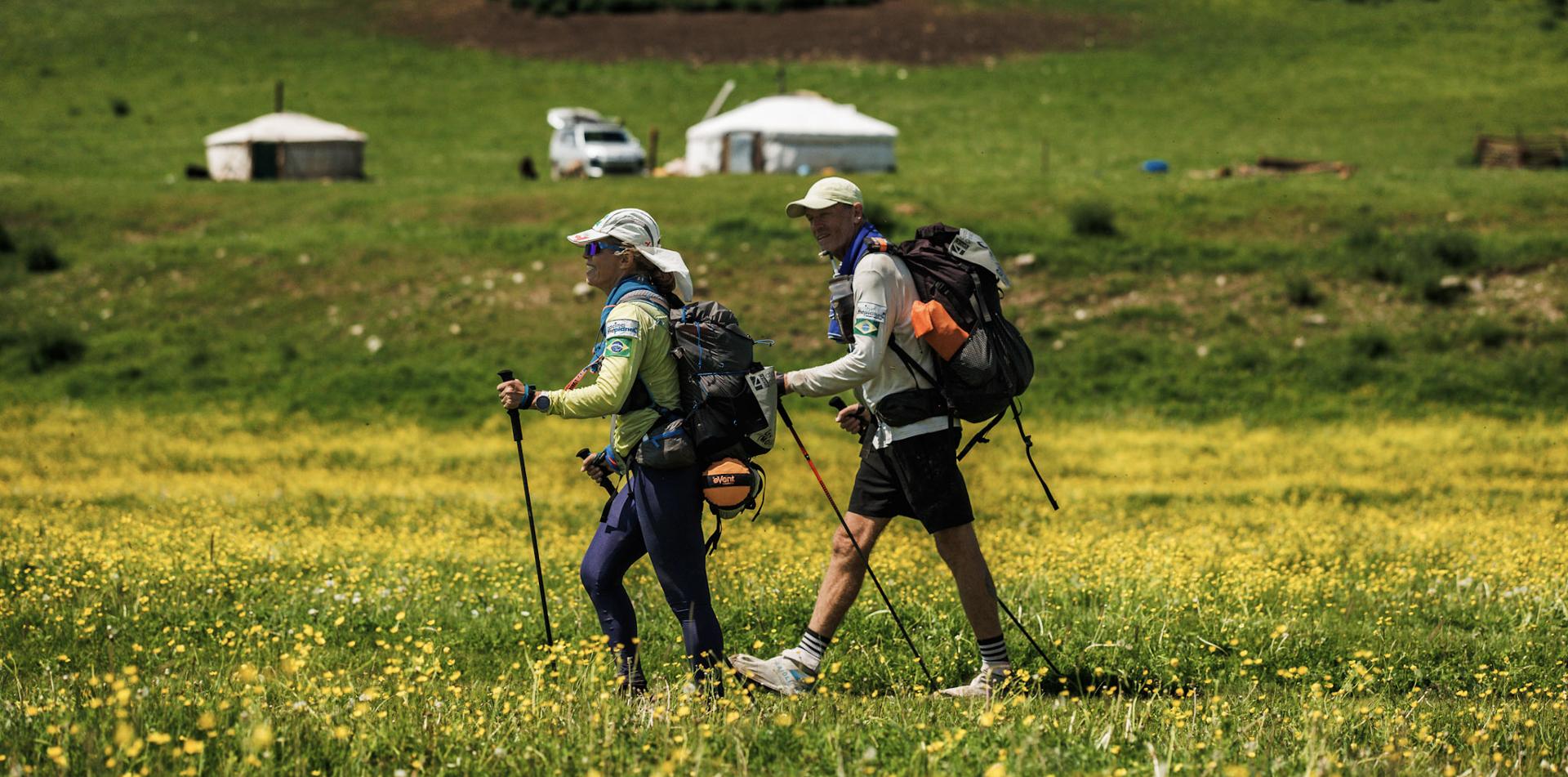How to Prevent Heat Related Illnesses
Overview
Hyperthermia is defined by Webster's simply as "abnormally high temperature."[1][1] Taken into context of the athlete, the term encompasses a myriad of syndromes and disorders that can also be grouped under the term "heat illness."
Human body temperature is closely regulated by a complex system of control mechanisms, keeping a fairly regular rhythm of temperatures ranging from a low of 36 degrees Celsius in the early morning to a high of 37.5 degrees Celsius in the late afternoon.[1][2] Broadly, temperature regulation is determined by a balance of heat generation and heat loss. Heat is produced by metabolic processes such as breathing or running, and is lost via body surfaces such as the skin and, to a lesser extent, the lungs. Heat is lost to the environment by four major methods: conduction, convection, radiation, and evaporation. Conduction is heat loss through direct contact, convection is heat dissipated through air, radiation is infrared energy transmission, and evaporation releases heat through the conversion of liquid to gas.[1][3] Using these methods, the body regulates the amount of heat that is dissipated. Evaporation is a significant method of heat management. When the body senses a rise in temperature, the thermal center of the hypothalamus triggers dilation of surface veins and increases sweating. Evaporation of sweat cools the skin, and dilating the surface blood vessels enhances the dissipation of heat. The external environment also plays a significant role in heat regulation; when ambient temperatures exceed body temperature, heat is absorbed into the body and vice-versa.[1][4]
Hyperthermia occurs when the body's natural ability to maintain its core temperature is compromised. It is a result of either excessive heat production by the body, excessive environmental heat, or diminished ability to dissipate heat. Several conditions exist in which temperature control by the central nervous system is impaired; these conditions are less relevant to the extreme temperature athlete and will not be discussed here. When exercising at maximal intensity, the skeletal muscles can increase their metabolic consumption by up to 20 times, with approximately 75-80% of that energy converted into heat.[1][5] Individual athletes can produce up to 2 liters of perspiration per hour, releasing up 900 kcals of energy per hour solely through evaporation.[1][6] However, the body is not able to sustain this consistent cooling over time. Environmental factors, such as humidity and temperature, and internal factors, such as dehydration, can play a significant role in the body's ability to regulate heat. When the ambient temperature equals or exceeds body temperature, evaporation becomes a crucial mechanism in combating hyperthermia, a mechanism upon which the body relies for thermoregulation.[1][7] When the body's heat production exceeds its ability to dissipate heat, hyperthermia may ensue.

Risk Factors
Several risk factors are associated with heat related symptoms and syndromes, including environmental temperature greater than 35 degrees Celsius (95 degrees Fahrenheit), humidity dehydration, obesity, cardiovascular disease, strenuous exercise, burns (including sunburn), and fatigue.[1][8]
Signs and Symptoms
Heat illness encompasses a range of symptoms, from mild to severe.
- Heat swelling, or heat edema: painless swelling of the peripheries, mostly self-limiting. No associated increase in body temperature.
- Heat rash (miliaria rubra): Also known as "prickly heat," this rash appears as small pinpoint red spots in areas of high sweat production, such as the trunk or groin, and mostly involves areas confined or occluded by clothing. Heat rash can be particularly itchy and uncomfortable.
- Heat cramps: painful, intermittent contractions of involved muscles, often as a result of overuse and salt/water imbalance.
- Heat syncope, or fainting: Syncope from heat exposure is often a sequelae of the body's natural temperature regulation. As discussed above, increase in temperature causes a dilation of veins near the surface. This results in a relative increase in the amount of blood in the periphery and decrease in the central circulation, which supplies the brain. If an individual is upright for a long period of time or rapidly transitions from laying or sitting to standing, blood may "pool" in the lower extremities, and with dehydration and fatigue, this relative diversion of blood away from the brain may cause a syncopal, or fainting, episode.
- Heat exhaustion: Illness associated with mild temperature elevation (37-40 degrees Celsius). Symptoms include malaise, nausea, vomiting, headache, weakness, increased heart rate, and mildly increased temperature. Sweating may be present or absent, and skin may or may not feel warm to touch, but mentation is normal.
- Heat Stroke: This is part of the same continuum as heat exhaustion, but heat stroke is a medical emergency, with a high mortality rate if not treated promptly and properly. Heat stroke is the third leading cause of death in athletes.[1][9] Symptoms include elevated temperature, usually above 40 degrees Celsius, and change in mental status, including confusion, unconsciousness, disorientation, or bizarre behavior. Seizures, diarrhea, shortness of breath, low blood pressure, and increased heart rate may also occur. This is a serious and potentially fatal condition.
Treatment
Treatment of heat illness depends largely on the symptom, but mostly is dependent on cooling the affected individual or giving the body ample opportunity to cool itself.
- Heat edema: Mostly self-limiting. Elevate legs when possible and consider supportive socks or stockings.
- Heat rash (miliaria rubra): Cooling and loosening clothing around the area, as well as drying the affected skin, may be helpful in resolving the rash. Consider local application of an anti-inflammatory lotion. Generally resolves on its own within 7-10 days.
- Heat cramps: Rest in a cool environment, if possible. Stretch and massage the affected muscle groups, and rehydrate with both fluid and electrolyte replacement.
- Heat syncope: Examine for any injuries, including cuts, breaks, or head and neck injuries. Keep patient in a horizontal position, or if possible raise his or her legs above head level for at least twenty to thirty minutes. If the fainting episode is due to heat and vasodilatation, it should not last long as the horizontal position should reintroduce normal blood flow to the brain. When rising, patient should maintain a sitting position for several minutes prior to standing again. Consider other causes of syncope, including low blood sugar, cardiac or metabolic causes, asthma, seizure, or other trauma. Rehydrate with both fluid and electrolyte replacement.
- Heat exhaustion: The mainstay of treatment for heat exhaustion and stroke is reducing body temperature. With heat exhaustion, the person should be removed from sources of heat, if possible, and restrictive clothing should be removed. An oral rehydration solution with fluids and electrolytes should be given. Ice packs to the axilla, neck chest wall, and groin can be applied indirectly (without direct skin contact). With rest and cooling, this is generally a self-limiting condition. However, if unmonitored or if untreated, heat exhaustion can progress to heat stroke and must be given adequate attention.
- Heat Stroke: Heat stroke should be aggressively managed. The individual should be removed from sources of heat if possible, and the person should be cooled as quickly as possible. As it warms above 40 degrees Celsius, the body loses its natural ability to regulate temperature, and may become more hypothermic. Restrictive clothing should be removed. Rapid cooling should be initiated, including indirect application of ice packs to the chest, neck, axilla, and groin. Evaporative cooling should be facilitated by wetting the patient’s skin and fanning. If available and practical, patient may be immersed in cool water. Because of mental status changes, patient may not be safe to take fluids by mouth due to increased risk of vomiting and aspiration. Protect patient’s airway as much as possible and, if available, rehydrate with intravenous fluids. Avoid medications such as aspirin or Tylenol. Heat stroke can be complicated by cardiac arrhythmias, liver damage, low blood pressure, or seizures. Continue to monitor vital signs, mental status, respiratory status, and temperature. There is no evidence to support medicinal treatment in heat stroke.[1][10] Patient should be transported to the nearest medical facility as soon as logistically feasible.
Prevention
Prevention of hyperthermia and heat illness involves measures which help the body balance heat generation and heat loss. This can be accomplished by changing both external and internal factors.
- External factors
- Avoidance of direct heat or sunlight,
- Wearing appropriate, breathable clothing suited to the environment and temperature,
- Layering of clothing to allow for shedding or adding as appropriate.
- Internal factors
- Proper hydration
- Hydration with both fluids and electrolytes is essential for continued heat management. It is recommended that the athlete drinks 16 ounces of water of sports drink 1 hour before exertion, and continues fluid intake at 4-8 ounces every 15 to 20 minutes while exertion continues.[1][11] Urine color and output should be monitored closely; dark urine and/or decreased output are flags for concern. Salty foods help with electrolyte replacement, as are electrolyte enhanced sports drinks.
- Conditioning/acclimatization
- General conditioning remains important, as overweight or obese athletes have an increased risk of heat stroke.[1][12] In addition, specific environmental conditioning, including gradual exposure to warmer temperatures, allows for the body to sweat more efficiently (greater volume of sweat and a decreased relative concentration of electrolytes), lose heat more efficiently with greater peripheral vasodilatation, lowering heart rate, and increasing water and salt conservation by the kidneys.[1][13]
- Avoidance of certain foods and medications.
- Medications or food which impair sweating, also known as anticholinergics (antihistamines such as Benadyl and antidepressants fall in this category), or which contribute to dehydration (diuretics, caffeine, alcohol) should be avoided.
- Proper hydration
References
[1][1] Webster's online dictionary, www.webster-dictionary.net
[1][2] Simon HB, Swartz MN. Pathopsysiology of fever and fever of undetermined origin. Rubenstein E, Federman D, eds. Scientific American medicine. Scientific American. New York, 1992.
[1][3] Auerbach, P. Medicine for the Outdoors. The Lyons Press. New York, 1999.
[1][4] Simon, HB. Hyperthermia. The New England Journal of Medicine. 1993. v 329, 483-487.
[1][5] Maugham, RJ, Watson, P, and Shirreffs, S. Heat and Cold. What does the Environment do to the Marathon Runner? Sports Medicine. 2007: 37, 396-399.
[1][6] Simon, HB. Hyperthermia. The New England Journal of Medicine. 1993. v 329, 483-487.
[1][7] Kenefick RW, Cheuvront SN, Sawka MN. Thermoregulatory Function During the Marathon. Sports Medicine. 2007: 37, 312-315
[1][8] Auerbach P, Donner H, Weiss E. Field Guide to Wilderness Medicine. Mosby. Pennsylvania, 2003.
[1][9] Barrow MW, Clark KA. Heat-related illnesses. Am Fam Phys. 1998; 58: 749-756.
[1][10] Howe A, Boden B. Heat-Related Illness in Atheletes. The American Journal of Sports Medicine. 2007: 35(8): 1384-95.
[1][11] Howe A, Boden B. Heat-Related Illness in Atheletes. The American Journal of Sports Medicine. 2007: 35(8): 1384-95.
[1][12] Epstein Y, Moran DS, Shapiro Y, Sohar E, Shemer J. Exertional heat stroke: a case series. Med Sci Sport Exerc. 1999; 31:224-228.
[1][13] Auerbach, P. Medicine for the Outdoors. The Lyons Press. New York, 1999.







 Newsletter
Newsletter
 Online Store
Online Store





